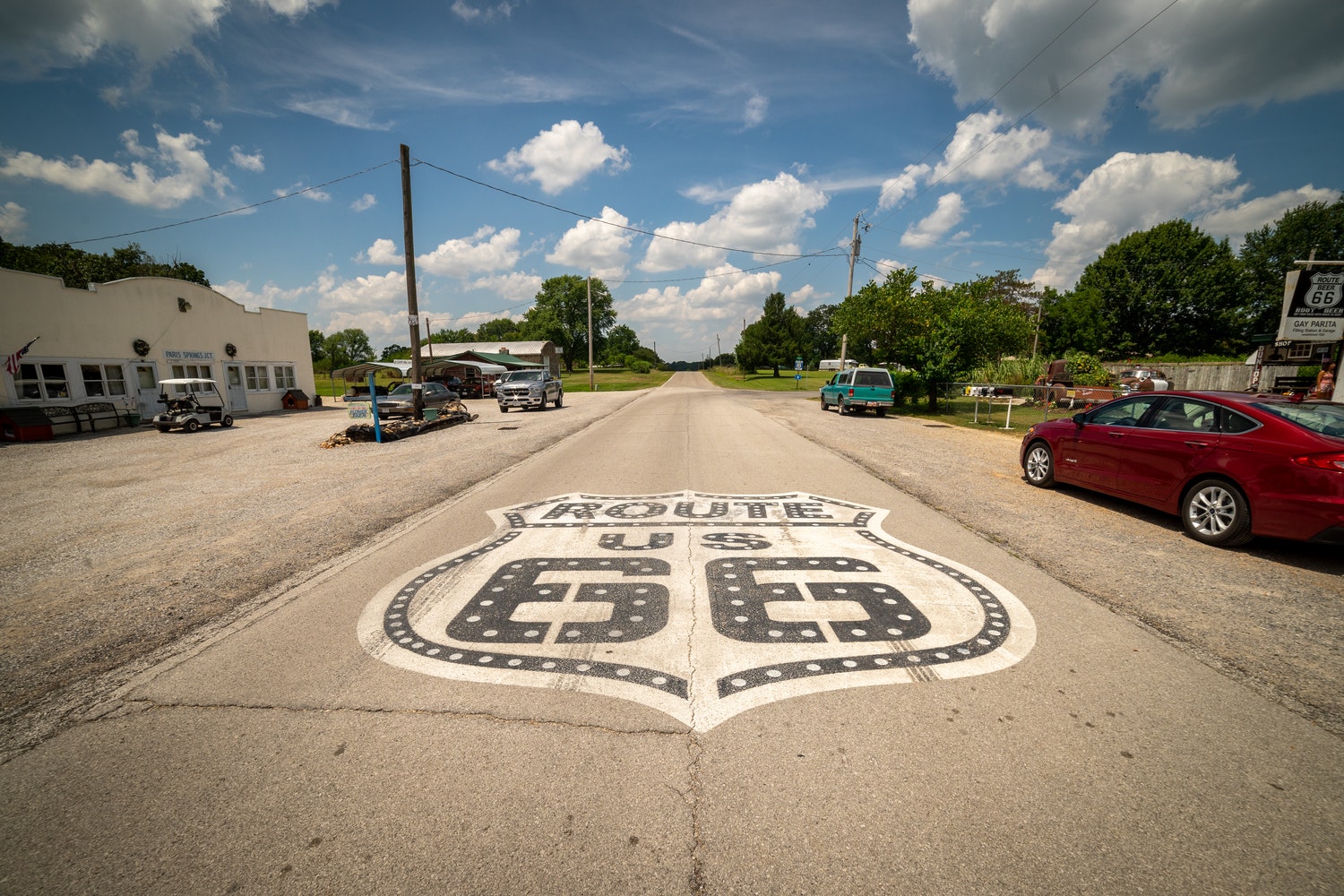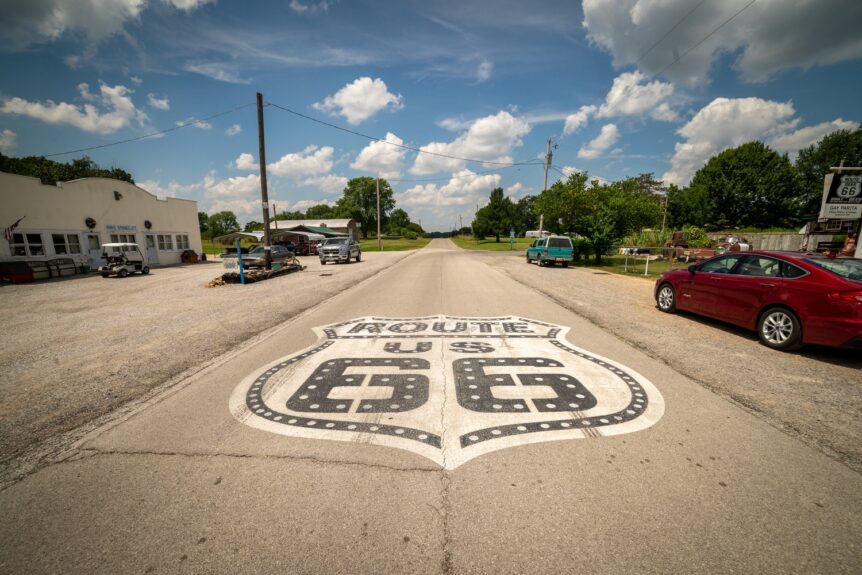The Complete Guide to a Route 66 Road Trip

America is one of the greatest places in the world for a road trip — so much so that road-tripping has developed something of its own culture in America, with deep lore dating back in some cases over a hundred years.
One of the most iconic cornerstones of the American road trip culture is undoubtedly the legendary way of Route 66.
From films to songs to Americana culture itself, there’s something special about this once-massive stretch of road. Although Route 66 is now officially decommissioned, it is still very much alive thanks to its surrounding communities.
If you’re thinking of taking a road trip down the “Mother Road” (as it was dubbed by John Steinbeck in Grapes of Wrath), there is much to discover, but you’ll need a bit of planning to help you out.
Today’s Autio travel guide is all about Route 66. We’re talking about the keys to planning your trip and how to execute your plan (and adjust on the fly) for the best Route 66 experience possible.
Without further ado, let’s hit the road!
The History and Culture of Route 66
Constructed in the 1920s, Route 66 was once a center of commerce and culture. While there are longer and older roads throughout the United States, arguably none have had a greater or longer-lasting cultural impact.
In many ways, Route 66 has become legendary. Used by many to escape the Dust Bowl during the Great Depression in the 1930s, this Main Street of America has represented access to the American dream for decades.
Even in the 21st century, Route 66 is still a common reference in popular media, with films like Pixar’s Cars heavily featuring its scenery.
The road even has a theme song! “(Get Your Kicks On) Route 66,” composed by Bobby Troupe in 1946, is still known widely today and has been covered by a plethora of musicians.
Much of Route 66’s culture is defined by the roadside attractions along the way. Mom-and-pop cafes, artsy motels, neon signs, vintage gas stations and diners, and more can be encountered across every leg of your adventure.
These places are rich with history and tell a lot about the people who once lived there, as well as those who still do.
Route 66: Connecting the Country
Route 66 isn’t just about the culture of the road itself. One of the greatest strengths of the original highway and its remnants is its ability to connect people across the country.
Spanning almost two and a half thousand miles and touching eight different states, from its origin in Chicago, Illinoisto the end of the trail in Los Angeles, California, it's easy to see that Route 66 is something of a bridge across the country. Like all bridges, it links worlds that would otherwise be apart.
As you travel down historic Route 66, you’ll find ample opportunity to stop at detours, visit new towns you’ve never heard of, and see natural scenery away from the beaten path. You never know what you’ll find when you begin to traverse the vast areas made accessible by Route 66 and its connecting roads.
Oklahoma and New Mexico alone each have nearly 400 miles of Route 66 to explore, while some states like Kansas only have 13. You could focus solely on the Oklahoma route — spanning Oklahoma City, Tulsa, Clinton, and more — or you can see how far along this winding road you can roam, finding everything the USA has to offer.
Afraid of missing out? Be sure to talk to locals as you go and ask about any must-see interesting spots nearby.
You can also utilize technology such as our innovative Autio app, a location-based audio platform that tells you stories when you pass through or near interesting areas. Curiosity has never been so convenient!
How To Plan Your Route 66 Road Trip
Today, mapping out a trip down Route 66 isn’t as simple as it was when the highway was still one large connected path. For a modern Route 66 road trip, you’ll need to break it down across multiple maps connecting different portions of state and historic Route 66 segments.
As you plan your trip, there are a few things to keep in mind:
Time Frame
Being conscious of your time frame is central to planning any trip, but it's particularly important with Route 66. For one, you can expect this drive to be relatively slow.
The trip time averages anywhere from 40 to 50 hours on the road (if you plan to tackle the entire route), depending on your speed and other factors like weather and traffic.
Being conscious of your driving time totals and maintaining balanced travel habits, you’ll want about three weeks at a minimum if you’re going start to finish.
Of course, many people visit Route 66 across smaller portions of the massive route, so there’s something here for everybody.
Spontaneous Stops and Detours
Route 66 is a trip best traveled when you’re flexible and willing to go off the beaten path. Don’t rush your way between the major points of interest! Some of your most memorable experiences are likely to happen in the most unexpected places.
Be sure to have the Autio app at your side to hear interesting stories about all sorts of fun detours you might encounter along the way.
Mode of Travel
Let’s not forget your mode of travel. Cars, campers, and even motorcycles… there are pros and cons to each when it comes to Route 66. You can expect long stretches of rural road in some areas and extreme weather in others (especially as you get farther west).
Obviously, a car, camper, RV, or van will be best equipped to handle whatever weather comes your way as you go off the beaten path. However, there is something special about the classic experience of riding Route 66 on a motorcycle.
There are also plenty of Route 66 tours available at different points of the route, potentially allowing you to make the journey without driving at all! Bus rides and even motorcycle rides are on offer if sitting back and enjoying the view without being at the wheel appeals to you.
Iconic Stops on Route 66
One of the greatest strengths of Route 66 is the sheer amount of unique points of interest. From natural scenery and landmarks to vintage diners, gas stations, and mom-and-pop shops, there are hundreds of possible stops to make.
Architecture: Illinois and Missouri
Starting in Chicago, there's so much of Illinois to explore. Although you’ll be eager to start your journey, don’t skip out on the origin city too fast.
The architecture of Chicago is world-famous, so an architecture-focused tour of its Historic District and Old Town could ensure you leave with a deep appreciation for the wonders you witnessed. Grab some deep dish pizza while you’re there, and then you can be on your way!
Illinois is also home to the Route 66 Hall of Fame & Museum in Pontiac, a must-see for those of us who want to learn even more about the Mother Road's rich history.
Continuing south, the architecture marvels continue, perhaps most notably with the St. Louis Gateway Arch. If your route goes through major cities, this is definitely one to see.
Cadillac Ranch: Texas
One of the most famous and easy-to-reach stretches of Route 66 is the Cadillac Ranch in Texas. This iconic roadside art exhibit features ten Cadillac sedans half-buried, nose-down in the dirt.
Since its origin in the 70s, the art installation has attracted huge numbers of visitors from all over the world as they make their way across Route 66’s historic path.
Blue Hole: New Mexico
Swimming holes are always a fun and exciting attraction, especially during the right seasons. For an almost otherworldly experience, head to the Blue Hole in New Mexico, where clear blue water stretches up to 80 feet deep in this little swimming hole.
The water is a constant, crisp 61 degrees Fahrenheit, so swimming here is best saved for hot weather! If you’re a diver, you can even rent gear and scuba here.
Petrified Forest National Park: Arizona
The western United States is chock-full of national parks, but there is only one that includes portions of Route 66: The Petrified Forest National Park in Arizona.
Here you’ll find beautiful overlooks and a paleo lab exhibiting the colorful petrified wood found in the park’s Rainbow Forest. Depending on how long you wish to spend, you could stop for a few views, or head deeper into some backcountry trails and receive a ranger talk.
Don't forget to continue along to Gallup, home of the historic El Rancho Hotel and the Rex Museum. A quick detour from Flagstaff will bring you to Grand Canyon National Park, a must-see despite being off the official Route 66 path.
Santa Monica Pier: California
The end of your road trip can be just as important as the beginning! The Santa Monica Pier is a beautiful beach location with restaurants, stores, and Pacific Park, featuring the iconic Ferris wheel.
Los Angeles has plenty to offer, from the glittering shops of Beverly Hills to the historic streets of Hollywood. It’s a place full of picturesque backgrounds to document the end of your journey if your itinerary takes you this far!
Getting the Most Out of Your Travels
No matter how much planning and research you do, you can never guarantee things will go according to plan. At Autio, we’re big believers in staying flexible and curious.
Don’t be afraid to slow down, explore, and ask questions. With Our Autio audio stories, you’ll be inspired and entertained wherever you go.
For more helpful guides on road tripping in America and beyond, keep coming back to the Autio blog!
Sources:
